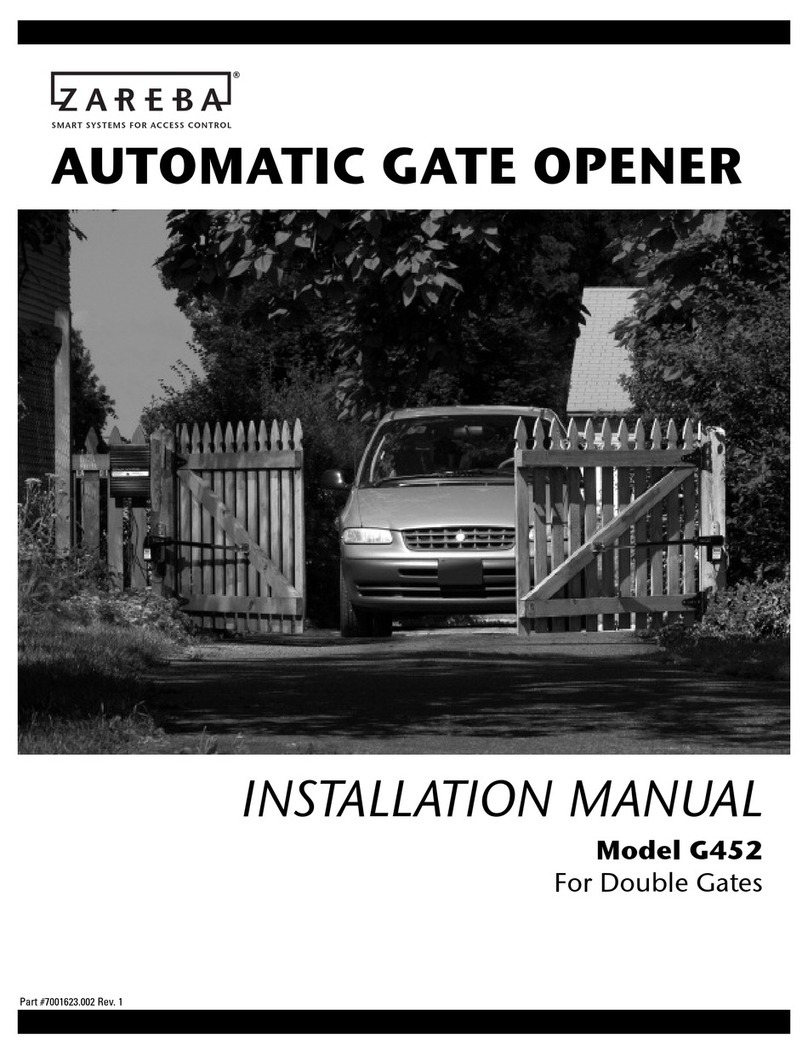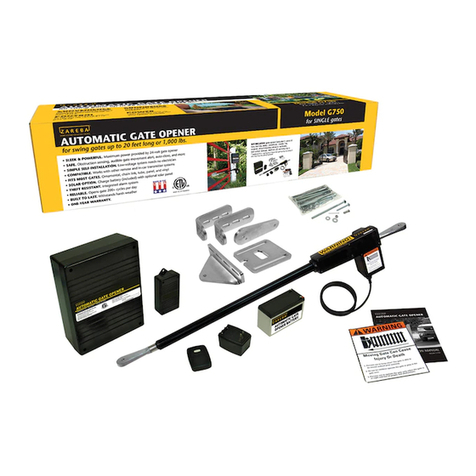
G550 Automatic Gate Opener Installation Manual
6
IMPORTANT SAFETY
INFORMATION
General Safety Information
Vehicular gates are large heavy objects. Automatic gate
openers provide a convenient way to open and close
the gates. Since the gate system and its components
exert a high level of force to open and close the gate,
they can be dangerous, causing severe injuries and
death to you and others.
Your safety and the safety of others depend on the
owner and users of this system to read, understand, and
follow the information and instructions in this manual.
Save this safety information for future use.
Safety overview checklist
WARNING – To reduce the risk of injury or death:
• Use this operator only with single swing gates.
• READ AND FOLLOW ALL INSTRUCTIONS.
• Never let children operate or play with gate controls.
Keep the remote control away from children.
• Always keep people and objects away from the gate.
NO ONE SHOULD CROSS THE PATH OF THE MOVING
GATE.
• Test the gate operator monthly. The gate MUST
reverse on contact with a rigid object or stop when an
object activates the non-contact sensors. After adjust-
ing the force or the limit of travel, retest the gate
operator. Failure to adjust and retest the gate operator
properly can increase the risk of injury or death.
• KEEP GATES PROPERLY MAINTAINED. Read the own-
er’s manual. Have a qualified service person make
repairs to gate hardware if needed.
• The operator is intended for installation only on gates
used for vehicles. Pedestrians must be supplied with a
separate access opening. The pedestrian access open-
ing shall be designed to promote pedestrian usage.
Locate the gate such that persons will not come in
conatct with the vehicular gate during the entire path
of travel of the vehicular gate.
• SAVE THESE INSTRUCTIONS
• Remember that the Zareba Automatic Gate Opener
must only be installed on gate systems meeting the
requirements of the application.
• Ensure that you are using the correct opener for the
type and size of gate, its frequency of use and the
class rating.
• Ensure that the gate and gate opener installation com-
ply with applicable local codes.
• Contact local fire and law enforcement to arrange
emergency access procedures.
• Keep people, animals, and property away from the
gate area. Do not let children play in or near the gate
area.
• Use caution with moving parts to avoid injuring fin-
gers or hands.
• Consider installing contact sensors, or non-contact
sensors to provide additional safety and protection
against entrapment.
• Never activate your gate opener until you ensure that
the area is clear of people, pets, or other obstructions.
Watch the gate until it stops.
• Do not drive forward until the gate stops completely.





























